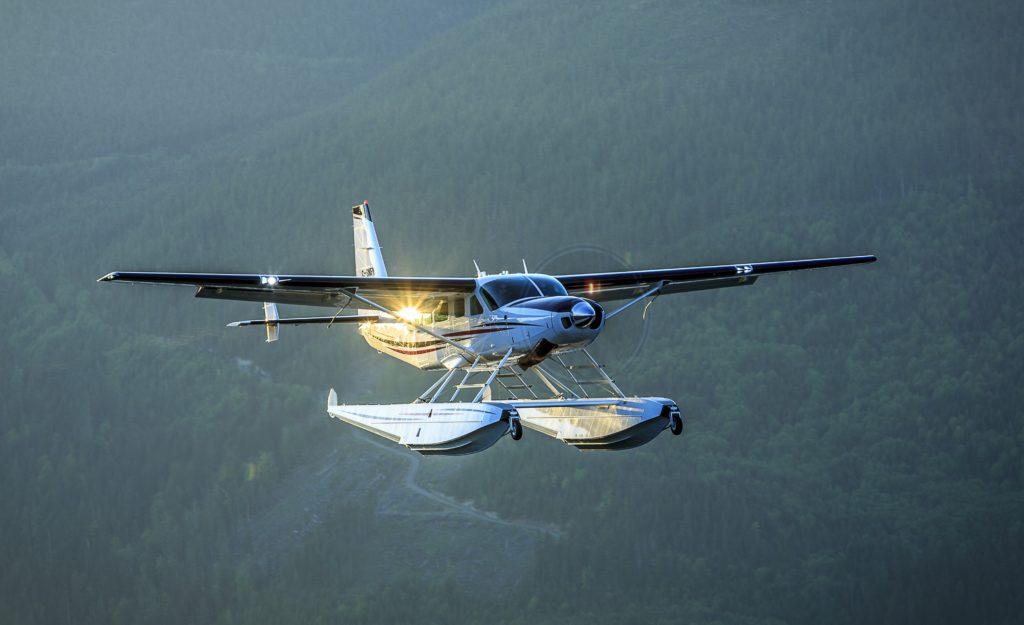Estimated reading time 6 minutes, 48 seconds.
So far this year, 34 aviation accidents and incidents are under active investigation by the Transportation Safety Board of Canada (TSB). Seven of those accidents involved floatplanes, including six which resulted in fatalities.

The worst resulted in seven deaths when a de Havilland DHC-2 Beaver suffered a “collision with water” July 15 at Mistasin Lake in central Labrador. Eleven days later, there were four in British Columbia when a Cessna 208 Caravan crashed on Addenbroke Island, north of Vancouver Island. Others occurred in Quebec, Ontario and Manitoba which, combined with our coastal regions, can present pilots with some of the most challenging environments in the world.
“Recent statistics show another uptick in accidents and I suspect Transport Canada will be looking for answers,” said Jim Hartwell, retired to Campbell River, B.C., after more than 20,000 hours in floatplanes – mostly de Havilland DHC-2 Beavers and DHC-3 Otters – over more than three decades. He has become a forceful safety advocate as the administrator of the Floatplane Operations Association (FOA), which has an elected board of directors and about 30 member operators of varying sizes.
“So, why wait? Instead of burying our heads in the sand, we should be taking the initiative. Bush flying, floatplanes, is a sector of the aviation community deeply rooted in our past, and it continues to play its part in building this great nation. However, if it’s to remain viable, it must address the safety issue.”

Industry-led response
In 2016, Dustin Meierhofer, director of Transportation and Northern Safety for the British Columbia Forest Safety Council (BCFSC), voiced his concerns to the FOA about floatplane safety. Several forestry employees had lost their lives when floatplanes crashed during ferry flights to remote locations.
These concerns prompted Hartwell to begin creating a set of safety protocols dubbed the North Star Practices (NSPs) – a voluntary initiative involving everyone with a stake in ensuring that the public in general, and workers in the natural resources industry in particular, have the safest flights possible.
Hartwell enlisted the help of other industry professionals when developing the NSPs.
Vince Crooks, operations manager at Wilderness Seaplanes, based in Port Hardy on the northeast coast of Vancouver Island, was an early participant in the process. As FOA president since early 2018, he remains deeply involved in refining the NSPs.
“Vince Crooks and I just had a meeting with NATA (the Northern Air Transport Association) and the Forest Safety Council, as well as a couple of Transport Canada representatives, as an air carrier safety working group,” said Hartwell. “The Transport guys, Mike Hebert and Michael Ladd from the aerodrome standards branch, were basically there to listen.”

He said it helped to have more players at the table, especially if there is any concern about the NSPs overlapping the Canadian Aviation Regulations (CARs). Some elements are “very similar,” but the NSPs strive to enhance other regulations where its creators see a need.
Hartwell explained that the FOA is taking as much time as it needs “to find out if there’s something we’ve missed, or is detrimental to an operator or puts someone in a position that compromises their operation.”
The initial draft of the NSPs ran to tens of thousands of words at the outset; but several years of editing, consultation and hands-on industry involvement saw them winnowed down to a practicable size.
“There are sections that address operators, their corporate clients and employees, and other stakeholders who want to help diminish the potential for accidents,” said Hartwell. “That enables operators to show that they are operating to a higher standard. Also, the NSPs include an audit function that enables operators to address any issues they encounter and provides for transparency and a level playing field.”
One NSPs recommendation Hartwell was willing to share is that floatplane operations should be limited to “official” civil daylight hours: between 30 minutes after sunrise and 30 minutes before sunset. “That would give the pilots a little more daylight so that they aren’t pushing the boundaries so much,” said Hartwell.
Other elements of the NSPs remain unpublished while the tweaking process continues, but Hartwell told Skies that he expects them to be ready when operations ramp up next spring.
“Regulatory changes are coming,” he added, “so it was timely to put something like this together. There needs to be something out there that operators can incorporate into their safety management systems to show that they’re making a concerted effort to improve safety.”









I would be glad to assist if I can as I have approximately 30,000 total accident free flight hours and about 1/2 of that is on floats. Getting folks to fess up when incidents take place is one key in educating others so the same type incident does not occur again or get worse and actually cause an accident. Publishing folks inputs is very helpful. Anyway I’m a graduate of the USNavy Aviation Safety Officer course back in the day when the course was long and very diversified. Two of the USN squadrons I was in won awards for the safety programs I provided.